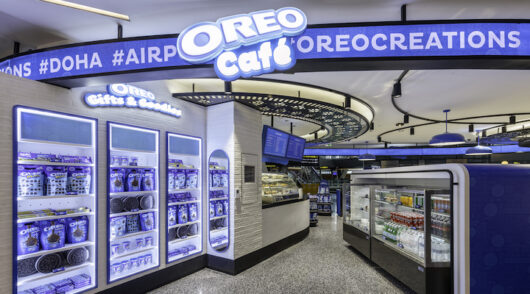Federal treasurer Josh Frydenberg has handed down a national budget worth billions of dollars with a focus on boosting the country’s digital economy, reskilling Australians for the jobs of the future, and on providing more cash for Aussies to spend through tax breaks.
But, after a year of comparatively strong economic recovery, how do the new measures stack up for the retail industry?
The nation-wide digital upgrade
In all, the government is dropping $1.2 billion on accelerating Australia’s digital transformation through it’s Digital Economy Strategy. The funding eclipses the $800 million unveiled last year, with both retailers and consumers having amplified their reliance on e-commerce, and the internet more broadly, due to the ongoing impact of Covid-19.
“Every business in Australia is now a digital business,” said Prime Minister Scott Morrison.
“This transformation is not merely a national one that needs to happen – it’s a global one that is happening We must keep our foot on the digital accelerator to secure our economic recovery from Covid-19.”
The measures announced, including almost $30 million to fund the rollout of high speed 5G internet and over $100 million to support digital cadetships to help Australians build necessary digital skills, have largely been welcomed.
“The pandemic has created a powerful shift in the way people live and work and how people purchase the goods and services they need,” Australian Retailers Association chief executive Paul Zahra said.
“It’s important that businesses, particularly small businesses, have the skills and knowledge they need to keep up with the rapid rate of innovation and new and emerging consumer trends.
“Consumers are now expecting retailers to ‘meet them where they’re at’, through consistent, seamless omni-channel interactions – and that involves businesses having a clear and dedicated focus on digital.”
Skills training for the masses (retail excluded)
And, after a year or so of job support and job creation being of high importance to both the Australian populace and the federal government, it’s no surprise the budget came out with a $1 billion extension to the JobTrainer program – an extension which it expects to provide around 160,000 extra training places.
Though, while eligibility for the fund was expanded within the 2021 Budget, it still isn’t available to retailers: the second-largest employing sector in the Australian economy.
“Much credit must go to the resiliency and innovation of the retail industry [but] despite the headway, it remains an uncertain period for both the industry and the consumers who support it,” said Vend vice president of APAC Gordana Redzovski.
“Particularly concerning for retailers are labour shortages. Retail is a transient industry, underpinned by overseas students and short-term visa holders.
“With border closures in place for the foreseeable future, an extension of the JobTrainer scheme [would] have been celebrated by retailers nationwide.”
ARA’s Zahra added that, while the extension is certainly welcome, it is a huge missed opportunity to exclude the retail industry.
“For these measures to translate into job outcomes, we need more flexibility for retailers to access the scheme,” Zahra said.
“As Australia’s largest private sector employer – with 1 in 10 Australians working in the industry – retail plays an important role in the employment and skills rebound.”
Tax cuts to drive spending
One of the main ways the government seems intent on boosting spending is through providing tax cuts to more than 10 million low and middle income earners – with an expected $7.8 billion to enter the economy through tax relief worth up to $1080 per person.
“Lower taxes means that hard-working Australians will keep more of what they earn, allowing them to spend more, help grow the economy and create more jobs,” the Government said.
And this, paired with the $1.7 billion towards childcare subsidies, is likely to further boost retail spend as Australians see their discretionary income rise.
“With family households, and particularly women, expected to hold more disposable income this financial year, this should trickle down into increased consumer spending,” said Emarsys’ APAC managing director Adam Ioakim.
“[It will] no doubt help further boost retail spend and accelerate industry growth following disruption in 2020 driven by the pandemic.”
But businesses didn’t miss out on tax relief. The Government also announced an extension of last year’s instant asset write-off scheme, which allows businesses to claim the full value of eligible assets that are installed before June 2023 – a 12 month extension.
Zahra welcomed the scheme, stating it allows businesses to invest in what they need, when they need it, so they can continue to focus on growing in the “post Covid world”.
Travel and CBD retail still left adrift
But, as with every budget, where there are winners there are also losers. And despite the business-focused measures announced, some areas of retail are still critically unsupported.
“The retail sector as a whole is tracking well, but there are two cohorts we remain deeply concerned about,” Zahra said.
“Travel retailers, like duty free shops and stores located in airports, have been severely impacted by international border closures, along with retailers in CBD locations, especially small businesses in both Melbourne and Sydney, where foot traffic is still catastrophically low.”
According to Zahra, these businesses aren’t struggling due to mismanagement, they’re struggling through no fault of their own and haven’t been given any meaningful support beyond JobKeeper.
“It’s these businesses that are at risk of bring left behind in Australia’s economic recovery,” Zahra said.






